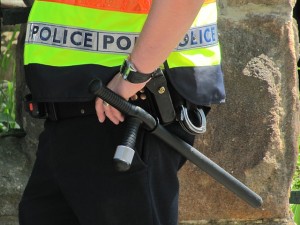Avoiding the Scarlet Letter: DOE 496501 Decision Offer A New Hope for Sex Offenders Seeking to Avoid Level 2 Classifications
The harm caused by a criminal conviction is rarely limited to the sentence imposed by a judge; often, the hidden costs far outstrip the official sanction. Although this is generally true for any crime (even misdemeanor offenses can blot a person’s record for several years before record sealing is available in Massachusetts), it is exponentially more serious for those convicted of a sex offense.
This is because convictions for qualifying sex offenses result not only in the imposition of a sentence, but – in Massachusetts and most other states – also generally require registration with the state’s Sex Offender Registry Board. And while a person convicted of even a serious non-sexual felony may be able to keep the fact of their criminal record largely a private matter , sex offenders who are classified as Level 2 or Level 3 in Massachusetts will have their status – including their name, photo, address, and place of employment, and details about their conviction – made an easily-searchable matter of public record on the SORB’s online index of sex offenders.
Leaving aside the questions of severity of a person’s crime or whether registries accomplish their stated intent, it is hard to overstate the practical impact that appearing on an internet registry has on the lives of Level 2 and 3 individuals. Finding work, or keeping a job once you have it, becomes extremely difficult. Keeping stable housing is similarly challenging – assuming one can find a landlord willing to rent in the first place, neighbors will often react badly to the news that a sex offender has moved into the neighborhood, and will pressure the landlord to evict or harass the offender until they opt to move . Given the visceral dislike that most members of the public harbor toward sex offenders generally, it increases the likelihood that the person will be physically assaulted.
The best way to avoid this, in Massachusetts, is to avoid classification as a Level 2 or 3 offender altogether, as Level 1 offenders are not subject to internet publication . Though it can be challenging to convince the SORB to classify an individual as a Level 1, a recent Massachusetts Supreme Judicial Court decision, Doe 496501 v. SORB, has given attorneys another potentially valuable tool.
The decision establishes that in order to classify an offender as a Level 2, the SORB must prove – by clear and convincing evidence -that the individual poses 1) a moderate risk to re-offend sexually; 2) that the danger posed by future sexual offenses by the individual is moderate ; and 3) that “public access to the offender’s personal and sex offender information . . . is in the interest of public safety”. The decision’s language makes explicit that this third requirement – which was previously often folded into the other two prongs, or otherwise treated perfunctorily in SORB classification decisions – is a necessary and independent determination that SORB must consider and address in deciding an offender’s level. While the Court acknowledges that it will often be the case that publication is in the public’s safety interest where an offender is also found to pose moderate risk and danger, it nonetheless cautions that “where a sexually nonviolent offender poses a moderate risk of committing moderately dangerous sexual offenses” there may be cases where internet publication “might not be justified because, in light of the particular public safety risk posed by the offender, [because] it would not serve a public safety interest.” Critically, if this third prong isn’t met, then the offender should not be classified as a Level 2 “even where the offender poses a moderate risk to reoffend and a moderate degree of dangerousness”. And, as a more general matter, it establishes that the SORB must show the person meets the requisite standard for each of these prongs for the relevant classification level. For example, to be a Level 3, the SORB must show high risk and high danger; Level 2 requires moderate risk and moderate danger. If the SORB can’t meet the requisite standard for all the elements, then it should assign the next-lower classification. For example, in Doe 496501, the Court found that Doe – who was classified as a Level 2 – posed a moderate risk to reoffend, but a low danger, and thus should be a Level 1.
The decision meaningfully gives a sex offender’s lawyer multiple angles of attack during the classification argument, and three burdens that the SORB must satisfy, rather than the previous situation where the third requirement was assumed – as a practical matter – so long as the first two were satisfied. Though that may not seem like much, given the right facts an attorney may be able to make a persuasive case or otherwise hold the SORB to its full burden.
An important caveat: the decision is only prospective – meaning it does not apply to already-finalized classifications – so it’s only of guaranteed use to individuals who are presently challenging (or will in the future challenge) their classification level. For people who have been through the classification proceeding and are currently appealing the SORB’s decision, it may also provide a ground – in the judge’s discretion – for having the matter sent back to SORB for a rehearing.
Classification is a complicated subject – beyond the scope of a blog post, anyhow – and something of a specialty even among criminal defense attorneys. Quality representation in classification hearings requires not just skill at compelling advocacy, but also knowledge of the current state of the law and fluency with the science and research concerning sex offenders. Hedges & Tumposky, LLP attorneys, including associates Forest O’Neill-Greenberg and James Haynes, are experienced advocates in classification, reclassification, and declassification proceedings, as well as for appeals from adverse SORB decisions, and both are regularly appointed to represent indigent offenders in SORB proceedings. If you have a question about challenging a preliminary classification or are looking for further information on what you may be able to do to reduce your current classification level, call 617-722-8220 today.








 The first phase of the Augustine litigation (Augustine I) involved a murder investigation into Shabazz Augustine, who was alleged to have killed his girlfriend. During this phase of the case, the Commonwealth moved for an order to obtain, from the defendant’s cellular service provider, CSLI for a fourteen-day period ending with the last day that Augustine’s girlfriend was seen alive. A Superior Court judge granted the Commonwealth’s request pursuant to the Federal Stored Communications Act (FSCA). The FSCA grants a court authority to issue an order compelling a cellular telephone provider to disclose CSLI to a governmental entity upon a showing of “specific and articulable facts . . . that there are reasonable grounds to believe” that the records sought are “relevant and material to an ongoing criminal investigation.” Using the court’s order, the Commonwealth approximately sixty-four pages of CSLI records taken from the cellular phone. These data eventually lead to Augustine’s indictment for murder.
The first phase of the Augustine litigation (Augustine I) involved a murder investigation into Shabazz Augustine, who was alleged to have killed his girlfriend. During this phase of the case, the Commonwealth moved for an order to obtain, from the defendant’s cellular service provider, CSLI for a fourteen-day period ending with the last day that Augustine’s girlfriend was seen alive. A Superior Court judge granted the Commonwealth’s request pursuant to the Federal Stored Communications Act (FSCA). The FSCA grants a court authority to issue an order compelling a cellular telephone provider to disclose CSLI to a governmental entity upon a showing of “specific and articulable facts . . . that there are reasonable grounds to believe” that the records sought are “relevant and material to an ongoing criminal investigation.” Using the court’s order, the Commonwealth approximately sixty-four pages of CSLI records taken from the cellular phone. These data eventually lead to Augustine’s indictment for murder.